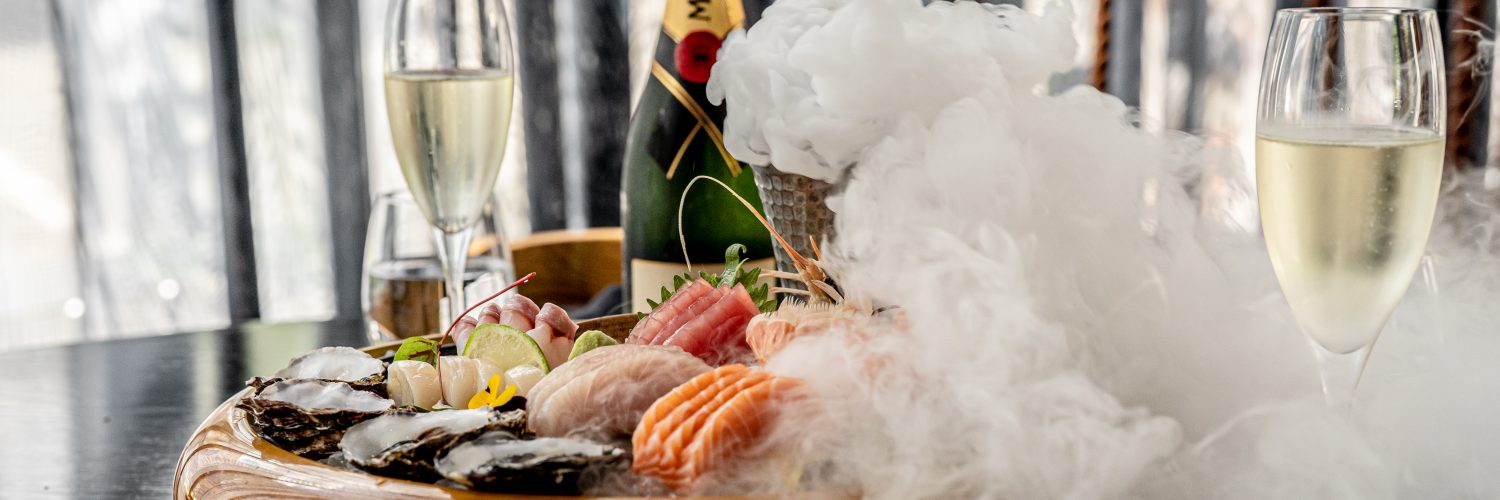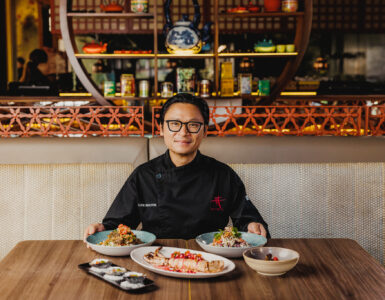We asked The Star chef Chase Kojima how to make perfect (and delicious) homemade sushi.

There’s an art to sushi making that chefs can spend decades perfecting, but lucky for us, Chase Kojima is willing to share his secrets. Here, the renowned chef of Sokyo and Kiyomi reveals his dos and don’ts for creating tasty homemade sushi.
WHEN CHOOSING YOUR TOOLS…
Do invest in proper knives
For Kojima, the right knife is essential when preparing sushi.
“I personally like to use a good quality stainless steel knife, because a lot of my ingredients make good knives rust,” he says. He suggests buying a unagi knife for slicing your fish and a santoku all-purpose knife for filleting fish and cutting vegetables.
Don’t use a plastic cutting board
A wooden cutting board is best when preparing fish, because it won’t slide under your knife, Kojima explains. However, if you want to step things up a notch, you could invest in an Asahi rubber cutting board, which is a sushi-grade cutting board made from a combination of wood and rubber. “It’s really soft on your knife,” Kojima says. “I used to have one when I was a young chef in the US, and it was incredible.”
Do roll perfect sushi with a bamboo mat
If you plan on making sushi rolls, you’ll need a bamboo mat to roll your dried seaweed (nori), rice and ingredients together. Avoid buying your mat from the supermarket if you can, because these mats are made from generic wood. “It’s hard to roll with something like that because you don’t get the control you need,” Kojima explains. “You want to get a bamboo one that is about one centimetre thick. You should be able to find one online or in a Japanese supermarket.”

WHEN PREPARING YOUR RICE…
Do purchase short grain rice It doesn’t matter if you’re preparing a sushi roll or something more complex, like nigiri (raw fish arranged on top of pressed rice) – the rice is your most important ingredient. Use short-grain Japanese rice because it has the stickiness and texture needed to hold your sushi together. Short-grain rice contains a lot of surface starch, which can make your rice thick and gummy when cooked, so make sure you rinse it in a bowl of water before cooking. “Wash it very quickly, but be careful not to break the grains,” Kojima says. “You’ll want to strain the water multiple times as you’re doing this.”
Don’t let the rice get too cold
Once the water runs clear, cook your rice in a rice cooker for at least 30 minutes. “While you’re waiting, make your sushi vinegar, so you can slap it onto the sushi rice as soon as it comes out,” Kojima says. Then let the rice cool only slightly before making your sushi. “Don’t let it cool all the way, or it becomes too hard to work with,” he says. “It’s also going to stick to your hands, so use a bowl of water with a touch of vinegar in it to keep your hands moist.”

WHEN WORKING WITH FISH…
Do start simple
If you’re nervous about working with fish, start with canned tuna, Kojima suggests. “You can do a lot of things with tuna, like sashimi, sushi rolls or spiced tuna rolls, and there won’t be much wastage.”
Don’t leave your fish out a room temperature
Handling raw fish isn’t as intimidating as it might seem. There are only two things to remember when it comes to food safety, according to Kojima – keep your fish refrigerated until you’re ready to work with it, and avoid preparing other meats, such as chicken and pork, on the same cutting board.
WHEN SELECTING YOUR FILLINGS…
Do experiment with your ingredients
“There are a lot of vegetables you can use when making sushi rolls,” says Kojima. “As long as you can cut it into long and skinny slices, I think anything is fine.” Kojima’s favourite fillings include asparagus, cucumber, pickles, radish, burdock root, avocado, sesame seeds and lettuce.
Don’t use firm vegetables
Though he acknowledges it’s only his personal preference, Kojima suggests steering clear of carrots and other hard vegetables that are difficult to manipulate. “Otherwise you have to cook them or boil them,” he says. “And there are so many other options!”







